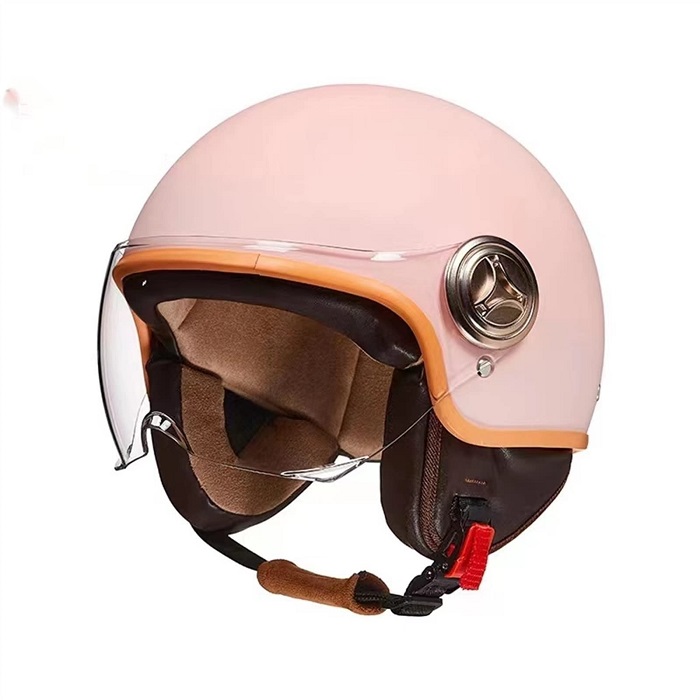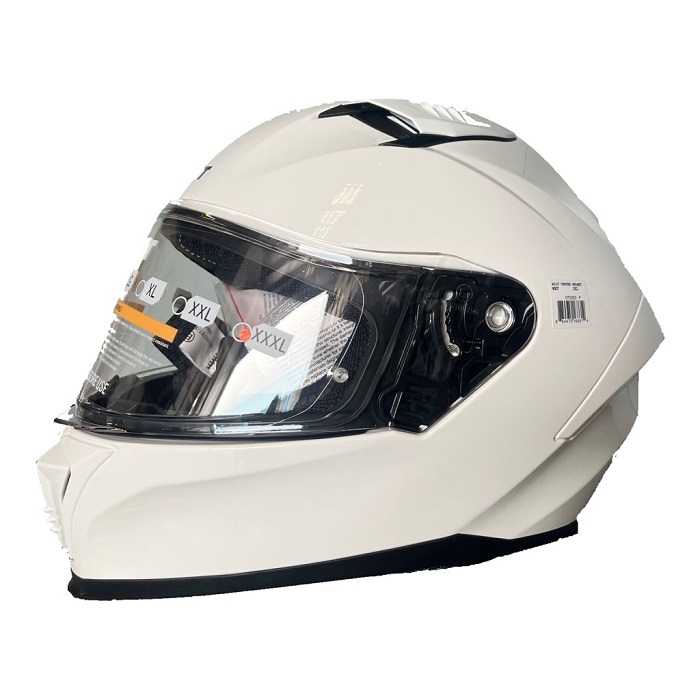Feb 10, 2025
How to Know Your Motorcycle Helmet Size: A Guide
Choosing the right motorcycle helmet size is crucial for ensuring comfort and safety while riding. An ill-fitting helmet can lead to discomfort, reduced protection, and ultimately affect your riding experience. This article will outline the key steps and considerations involved in determining how to know your motorcycle helmet size effectively. By following these guidelines, riders can make informed choices that enhance their safety on the road.
Importance of the Right Helmet Size
Selecting the correct motorcycle helmet size is crucial for several reasons. Firstly, a helmet that fits well offers the best protection. In case of a crash, a helmet that’s too large can slip off, while one that’s too small may not provide sufficient coverage. Comfort is another factor. Helmets come in various shapes and sizes to match different head forms, ensuring a snug and comfortable fit; a well-fitted helmet will enhance the riding experience. Moreover, noise levels are affected by helmet fit. Loose helmets can increase wind noise, which can distract the rider and lead to fatigue. Lastly, a properly sized helmet also ensures clear vision, as an ill-fitting helmet might obstruct the rider’s view. Therefore, knowing how to know your motorcycle helmet size is a practice that not only contributes to a rider’s comfort but essentially to their overall safety on the road.
Different Types of Motorcycle Helmets
Before you learn how to know your motorcycle helmet size, you should understand the different types available. Each helmet type offers unique features and levels of protection.
Full-Face Helmets
Full-face helmets provide the most comprehensive coverage. They cover the entire head, including the face and chin. This type is ideal for high-speed riding and offers the best protection in a crash.
Modular or Flip-Up Helmets
Modular helmets combine the coverage of full-face helmets with the convenience of open-face helmets. You can flip up the chin bar, making it easier to communicate or eat without removing the helmet.
Open-Face or ? Helmets
Open-face helmets cover the top and back of the head but not the face. They offer good visibility and airflow, making them popular for city riders. However, they provide less protection than full-face models.
Half Helmets
Half helmets protect just the top of your head. They offer the least protection but allow for maximum visibility and airflow. It is essential to consider your safety needs when choosing this type.
Off-Road or Motocross Helmets
Off-road helmets are designed with an elongated chin and visor portions for dust and debris protection. They are best suited for riders who venture off the pavement.
Dual-Sport Helmets
These helmets combine the features of full-face and off-road helmets. They are versatile and can be used for both on-road and off-road riding, offering a good balance of protection and convenience.
Knowing the differences between these helmet types is the first step in selecting the right helmet for your needs. Each type balances safety, comfort, and functionality, and the ideal choice depends on your riding style and preference.
Steps to Measure Your Head for a Helmet

When it comes to knowing how to know your motorcycle helmet size, accurate head measurement is key. Here’s how you can measure your head to find the perfect helmet fit:
- Find a Tailor’s Tape Measure – Grab a flexible tailor’s tape measure for an accurate measurement.
- Measure Your Head Circumference – Wrap the tape measure around the fullest part of your head, just above your ears and eyebrows. Ensure the tape measure is level and snug but not tight.
- Record the Measurement – Take note of the measurement in centimeters or inches, as helmet sizes are usually given in these units.
- Consult a Size Chart – Once you have your head measurement, compare it to a motorcycle helmet size chart. Helmet manufacturers provide these charts, and they are the best guide to finding the right helmet size.
- Select the Correct Helmet Size – Choose the helmet size that corresponds to your head circumference on the chart. If you are between sizes, try both to determine which offers the best fit.
By following these steps, you’ll ensure a starting point in your search for the right motorcycle helmet size.
Understanding Helmet Sizes and Shapes
After measuring your head for the right helmet size, it’s important to understand that helmets are also designed in different shapes to fit various head forms. Not everyone has the same head shape, so helmet manufacturers often create their products in a range of shapes to accommodate different riders.
There are typically three helmet shapes:
- Round Oval – This shape is most suitable for heads that have a similar length and width.
- Intermediate Oval – The most common head shape, where the head is slightly longer front-to-back than it is side-to-side.
- Long Oval – Best for heads that are noticeably longer front-to-back than they are wide.
Identifying your head shape is as crucial as knowing the size. To determine your head shape, you can ask a friend to look at your head from above or use two mirrors to view it yourself. Once you know your head shape, you can look for helmets that match it.
Manufacturers may vary in how they categorize shapes and sizes. It’s wise to review the specific helmet brand’s sizing and shape guides when selecting a helmet. Some brands may offer additional guidance or provide models that fit a particular shape better.
Keep in mind that each helmet model has its unique padding and contouring inside, which can affect the fit. It may take trying on several helmets to find one that fits your individual head shape and size comfortably. Always prioritize a snug fit that feels secure without causing pressure points or discomfort.
Remember, knowing how to know your motorcycle helmet size isn’t just about numbers. It’s also about the shape of the helmet relative to your head for a truly perfect fit.
Tips for Trying on Motorcycle Helmets

Trying on helmets is more than just picking the right size. Here are practical tips:
- Wear It for a While – When you try on a motorcycle helmet, wear it for at least five to ten minutes. This will give you an idea of how it feels over a longer period.
- Check for Pressure Points – While wearing the helmet, pay attention to any spots that feel particularly tight or uncomfortable. There should be no painful pressure on your forehead or temples.
- Look for Gaps – There shouldn’t be significant gaps between your head and the padding of the helmet. If there are gaps, the helmet is too big.
- Move Your Head Around – Nod and shake your head to ensure the helmet stays securely in place. It should move with your head and not slide around.
- Test the Strap – Always fasten the chin strap and check that it fits snugly. You should be able to fit only one or two fingers under the strap.
- Eyewear Compatibility – If you wear glasses, make sure there is enough room without them being compressed by the helmet.
- Use a Mirror – Look at yourself in a mirror to ensure the helmet sits level and straight. It should sit above your eyebrows without tilting forward or back.
- Consider the Weight – A good helmet shouldn’t feel too heavy on your head. Weight distribution is crucial for long rides.
By following these tips when trying on motorcycle helmets, you can find the best fit for safety and comfort. Remember, practice how to know your motorcycle helmet size every time you choose a new helmet.
How to Check for Proper Helmet Fit
After selecting a potential helmet using the correct size and shape, it’s essential to check for proper fit. Here’s a step-by-step guide to ensure the best helmet fit for safety and comfort:
- Position the Helmet Correctly – Place the helmet on your head so that it sits evenly between your eyebrows and the top of your head.
- Check the Cheek Pads – The cheek pads should touch your cheeks without pressing too hard.
- Evaluate the Brow Area – The helmet’s upper interior should be in contact with your forehead.
- Assess the Back and Sides – The rear of the helmet should not touch the nape of your neck, and the sides should feel snug against your head.
- Helmet Movement Test – With the chin strap fastened, try to roll the helmet off your head. It shouldn’t move or come off.
- Shake Test – Shake your head side-to-side and front-to-back. The helmet should stay put and move with your head.
- Listen for Noise – A well-fit helmet reduces wind noise. Notice any excessive noise as this may signal a poor fit.
- Final Comfort Check – Make sure there’s no discomfort, as even minor irritation can become painful over time.
By following these instructions, you will learn how to know your motorcycle helmet size and check if it fits right. Remember, safety is paramount, and a helmet is your most crucial protective gear while riding.
Adjusting Your Helmet for Optimal Comfort and Safety
Finding your motorcycle helmet size is just the start. After you have your helmet, making small adjustments can enhance comfort and safety. Here’s how to fine-tune the fit of your helmet for optimal wear:
- Adjust the Cheek Pads – If the helmet’s cheek pads feel loose, consider replacing them with thicker pads. Use thinner pads if they’re too tight.
- Tighten or Loosen the Chin Strap – The strap should be snug but not pinch. Adjust it for a secure, yet comfortable fit.
- Use the Padding to Your Advantage – Some helmets come with removable padding. Add or remove layers as needed to get a better fit.
- Check the Visor Position – Ensure the visor doesn’t obstruct your view and adjust it if necessary.
- Wear the Helmet Correctly – Always place the helmet straight on your head. Tilt can reduce visibility and protection.
- Regularly Inspect Fit – With wear and time, the fit can change. Regular checks help maintain the right fit.
A well-adjusted helmet makes for safer and more enjoyable rides. Take the time to ensure your helmet is properly fitted, not only when you first buy it but also as it ages.
When to Replace Your Motorcycle Helmet

Motorcycle helmets have a life span and it is crucial to know when to replace them for your safety. Helmets can degrade over time due to the materials breaking down, a factor not always visible. If you’ve had a crash, replace the helmet immediately, even if it looks fine. The impact can compromise the helmet’s structure in ways you can’t see. Check the manufacturer’s recommendations; most suggest replacing helmets every five years. Look for signs of wear and tear, such as loose padding or frayed straps, which indicate it’s time for a new helmet.
Wear from regular use, exposure to sunlight, and the elements also contribute to helmet degradation. Make a habit of inspecting your helmet regularly for cracks, dents, or other damage. If the fit has become loose over time, or if the helmet doesn’t feel as secure as it once did, consider getting a new one. Advances in technology mean newer helmets may offer better protection or features. Upgrading can improve safety and comfort.
In summary, replace your helmet after a crash, when recommended by the manufacturer, if you spot any damage, or if the fit changes. Staying informed on how to know your motorcycle helmet size ensures you get a replacement that fits correctly and provides maximum protection.
More Details